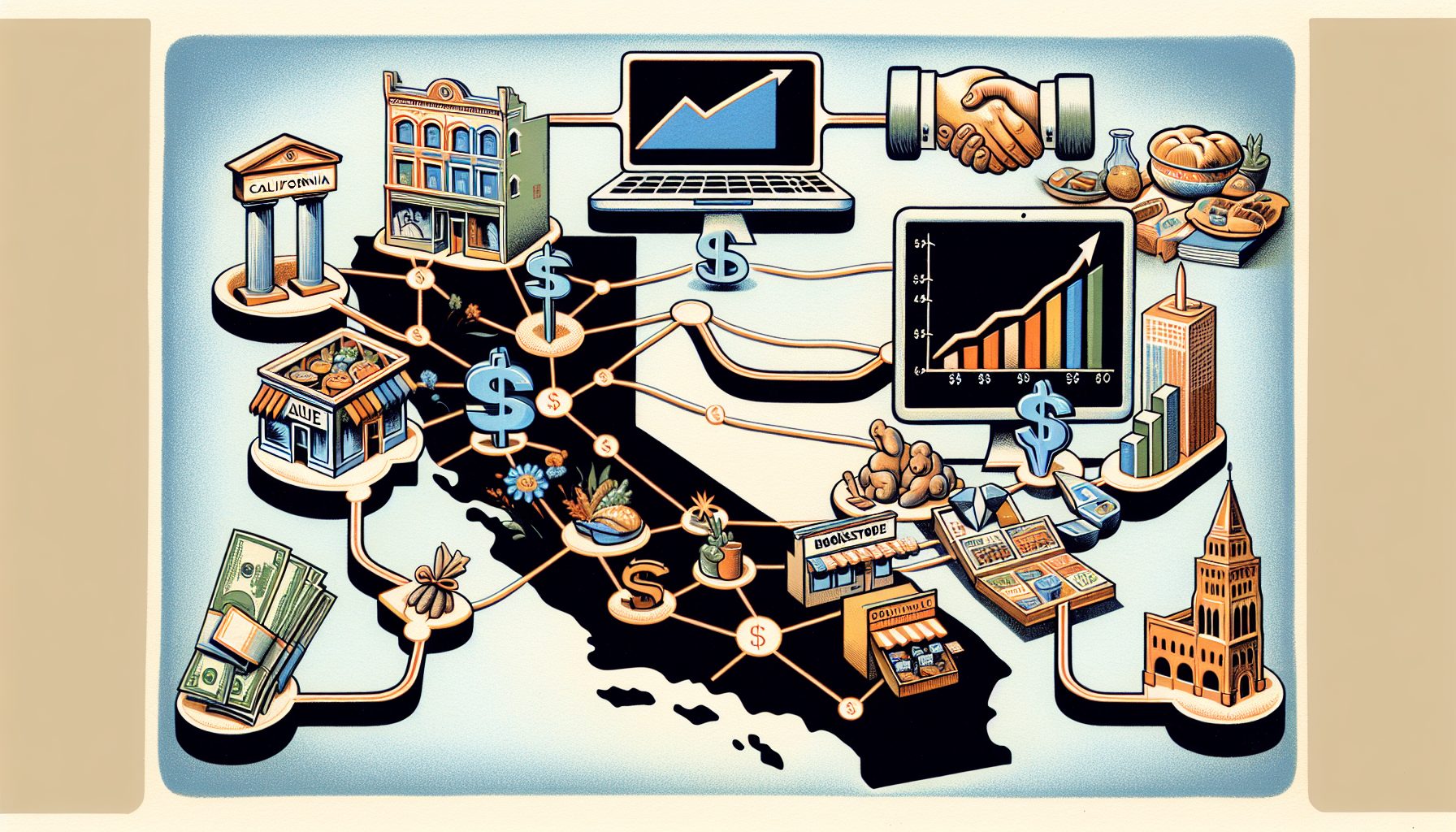
As fleet optimization manager for the New Jersey market area, her job is to free colleagues such as Steven Masterson, senior district manager for Waste Management of Delaware, from using highlighters, string, pushpins and maps cut into pieces and then pasted together to create routes for his drivers. Those were Masterson’s tools until early last year.
“Our system was antiquated,” says Masterson. “By the time we were finished, six months to a year later the routes had to change [due to new customers and acquisitions].”
Enter Schmidt. Her goal was to centralize the most basic, and arguably the most important, process the trash-hauling giant faces every day: the sequence of stops each truck must make to pick up the daily refuse of American life.
It’s no small issue. At the end of 2003, the company operated 18,850 routes in every state in the U.S. If Waste Management can eliminate one route, which includes a truck, a driver, fuel and maintenance, it can save $10,000 a month. That’s $120,000 a year per route. In 2003, Waste Management was able to save $18 million and is on track to save $44 million in 2004. That’s a boost of 7% for a company that earned $630 million in 2003. Over a five-year period, Waste Management plans to save $498 million on operations, resulting in a cash flow increase of $648 million.
Not bad for a $10 million initial investment in a homegrown application it now calls WasteRoute.
“This is a moving process,” Schmidt says, without irony. Each of the company’s 66 market areas—with a geographic region such as New Jersey and Delaware comprising an area—includes an average of 285 routes. To reroute the trucks in a given district took six to 12 months five years ago; now, it takes four weeks. If the company can map the route system efficiently, the savings can last a year or more. “We’re trying to be proactive so we don’t have to do a complete reroute every six months,” she says.
Waste Management relies on operations research, a quantitative technique designed to create models to predict the behavior of a system and the humans that operate it. Operations research uses mathematical theory, statistics and computing to solve problems. In Waste Management’s case, mathematics is applied to the numbers behind pickups such as the time it takes a driver to hoist a container via a robotic arm versus doing the job manually, or the time needed to deal with construction detours.
Once dozens of variables are combined into a route knowledge bank, WasteRoute uses algorithms to pick the most efficient paths. These algorithms sort through the myriad issues Waste Management executives face daily: Is construction delaying a driver? Are there promised windows of time to pick up waste? Is a driver close to running more than the 60-hour-per-week maximum imposed by the Department of Transportation?
WasteRoute’s rollout took 18 months to plan. First, Waste Management tried multiple off-the-shelf applications before determining it needed to build the application itself to account for all the variables it faces, such as when a local ordinance prevents a truck from passing over a storm drain. A Woodlands, Texas, logistics software company, Institute of Information Technology (IIT), won a 19-vendor bake-off to figure out the mathematical formulas for such factors as estimated pickup time, which side of the street to be on, and truck speeds. IIT won a final three-supplier round after Waste Management figured its algorithms were the best at cutting routes, balancing workload and meeting constraints such as a 400-customer cap per residential route.
IIT’s marching orders were to develop a routing system that could be used by any Waste Management executive or manager via a Web browser. Drivers still get information via printouts called route sheets.
The result is delivered over Waste Management’s intranet. The application pulls data from the company’s sales, customer service and operations databases, plots addresses to a map and then recommends route changes to increase efficiency. For instance, if a commercial customer gets three pickups a week for one 4-cubic-yard container, it may be possible to “upsize” him to an 8-cubic-yard container and cut visits to once a week.
Cleaning Up Internal Waste
The WasteRoute project is part of Waste Management’s effort to instill management rigor to a company that in the 1990s was muddled by hundreds of acquisitions—one a day on average in 1999—shaky accounting practices, weak internal controls and investigations by state attorneys general. In 1998, No. 3 player USA Waste bought No. 1 Waste Management when the larger company was facing financial ruin, Securities and Exchange Commission probes and class-action lawsuits seeking undisclosed damages. USA Waste then adopted Waste Management’s name and promptly stumbled, cutting earnings estimates three times in July and August 1999 for the quarter ended June 30, 1999. The class-action lawsuits soon followed; Waste Management settled them in November 2001 for $457 million.
In 1999, Waste Management began centralizing the company and revamping its management team. The goal: Give two decentralized businesses a common objective. In 2002, Waste Management collapsed more than 1,200 operating sites into what are now 66 market areas such as the New Jersey/Delaware region and Northern California. It also consolidated its information systems. Before the restructuring, daily operations were conducted with customized IBM AS/400 software distributed to more than 400 remote servers. Today, Waste Management operates under a consolidated, internally developed system for accounting, billing and customer service dubbed MAS. The system is centrally distributed to market areas and districts.
Those consolidated systems feed customer data into WasteRoute, which then maps the information to a route. The application, which is similar to Mapquest, can account for parameters that influence routes monthly. For instance, when schools are in session, Waste Management doesn’t pick up schools’ trash during recess because of safety concerns. In the summer, school pickups drop from five days a week to one or two and timing is more flexible. At the same time, pickups increase at resorts along the shore.
When changes are needed, a manager can add parameters such as road construction and generate a new route. Customers, meanwhile, expect drivers to hit designated times for certain pickups. “In Delaware, people set their watches by the mailman and the garbageman,” Masterson says.
Alex Popov, vice president of logistics at Waste Management, says the company is 60% done installing WasteRoute in its high-margin commercial accounts, 30% finished with its residential services, and is just beginning to roll out the software to its industrial customers.
Executives first tackled routes that were the easiest and most profitable. For instance, commercial accounts—strip malls, restaurants and small offices—are predictable because they have similar containers and regular pickup hours. Commercial accounts also generate more income because Waste Management hauls away more tons of waste with two or three trips to a landfill on average compared to residential.
The wild cards include blocked containers and new customer stops. Mileage is another issue. One driver may travel 150 miles to pick up 60 customers where another may drive 400 miles in a rural area.
For residential waste, the biggest change was more stops, potentially more drivers leaving cabs, and restrictions such as trash pickups on only the right-hand side of the street. The goal is to cluster customers in dense residential areas and reduce operating costs by traveling fewer miles as efficiently as possible.
The third target for WasteRoute will be the company’s industrial business, which covers construction sites and manufacturers. WasteRoute needs to be linked with data throughout the day on driver location and incoming requests for service from the billing system and dispatchers, since routes aren’t planned in advance. Currently, Waste Management can upload and download customer information daily to WasteRoute, but it isn’t a real-time link, according to Schmidt.
Surya Sahoo, IIT’s CEO, says there will be different constraints for the industrial business that will require a new algorithm. A typical industrial pickup vehicle can only service one container at a time, and 70% of the pickups are not scheduled in advance. An industrial container is picked up, emptied at a landfill and then brought back to the customer. Waste Management can also bring an empty container to the customer and swap it with the full one. When the container is emptied, the truck can go to another customer. The problem: Customers have different container sizes and service requirements. The new algorithm will also have to account for vehicle, container and material types, security clearance and weather patterns, Sahoo says.
Thow Out Those Pushpins
The industrial rollout offers more of a challenge, but Waste Management executives are confident after recent successes. Nevertheless, there’s a reason Masterson was using pushpins to route his drivers only two years ago. That’s because previous attempts to use routing software didn’t work.
USA Waste had an application called STARs and tried to roll it out to the newly merged company, but the software failed. It wasn’t linked with the company’s other systems, offered limited visualization and couldn’t account for factors such as road construction and driver availability.
After STARs flopped, district managers were on their own. In early 2002, Masterson installed route optimization software for the Delaware district. But the application, bought from a software company led by former employees of a Waste Management rival, struggled with optimizing dense areas, sent drivers down one-way streets and illegal roads, and couldn’t design residential routes with pickups on the right side of the street.
In early 2003, Waste Management was determined to succeed with WasteRoute, but needed solid data. Sahoo first took Waste Management’s customer database and mapped it to streets and locations with information purchased from Navtech, a mapping company. But Waste Management lacked billing information for all of its customers. In its residential business, Waste Management is often billed by homeowner associations and municipalities to pick up waste from a neighborhood. One billing address could represent hundreds of homes. The company filled in the gaps with municipal street information.
To verify data, Waste Management drivers fanned out with Nextel phones that can capture the coordinates of any spot on Earth and relay it by satellite to the company’s databases. Drivers simply pressed a button whenever they passed a new address. The process confirmed the location of commercial and residential sites, and allowed IIT to cluster addresses. “We had to validate the data and see it on a map or it wouldn’t have worked,” says Sahoo.
Also entered into WasteRoute were the type and size of waste containers—larger ones for commercial, smaller for residential—and estimated time to serve based on driver input.
Once the data was entered and functional, Schmidt and the managers set about selling the system to drivers. “It’s human nature to worry about change,” she says.
To alleviate drivers’ first concerns, Waste Management made it clear that WasteRoute would not eliminate their jobs. The system was cutting routes, but reallocating drivers and trucks. Any job losses would occur through attrition, according to Popov. Waste Management started the project with 19,600 routes and plans to end the year with 15,000. For its purposes, Waste Management considers routes and drivers to be synonymous.
Masterson also had to sell the system on the front lines. One 18-year veteran told Masterson he would quit if he had to go through a route change. Masterson walked the driver through the changes verbally and on a map. He even brought the driver’s wife into the loop.
After the drivers were convinced that the change was for the better, Schmidt began to show them computer demonstrations. As she recalls: “It was a great feeling when I heard, ‘That’s pretty cool, can I see my route?'”
Waste Management Base Case
Headquarters: 1001 Fannin, Suite 4000, Houston, TX 77002
Phone: (713) 512-6200
Business: Collects, recycles and disposes of trash. Also converts trash and waste to energy.
Chief Information Officer: Lynn M. Caddell
Vice President of Logistics: Alex Popov
Financials in 2003: Net income of $630 million on $11.57 billion in sales.
Challenge: Increase efficiency by implementing companywide information systems.
Baseline Goals:








